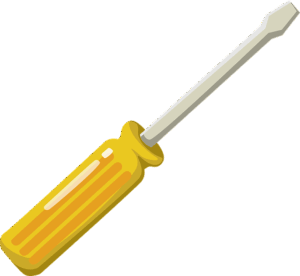Mastering Home Renovation: Repair, Plan, Manage Effortlessly

Before starting any home repair and maintenance project, conduct a thorough assessment of your prope…….
In every home, a subtle yet powerful dance unfolds—a constant interplay between structure and serenity, functionality and comfort. This intricate ballet is the realm of Home Repair and Maintenance, an essential practice that safeguards our living spaces and ensures their longevity. From the moment we step into our homes, we embark on a journey where each repair and maintenance task becomes a crucial chapter in preserving the sanctuary we call ours. This article aims to delve deep into this fascinating world, exploring its intricacies, global impact, economic significance, technological innovations, regulatory frameworks, and the challenges it faces. By the end of this comprehensive guide, readers will not only grasp the importance of home repair and maintenance but also be equipped with valuable insights for keeping their homes in top condition.
Home Repair and Maintenance is a multifaceted discipline that encompasses a wide array of activities aimed at preserving and enhancing residential properties. At its core, it involves the identification, assessment, and correction of any deviations from the optimal state of a home’s structure, systems, and components. This holistic approach ensures not only the physical integrity of the building but also maintains its functionality, energy efficiency, and overall livability.
Historically, the practice has evolved alongside human habitation, adapting to the materials and technologies used in construction. From the traditional methods of early civilizations, where repairs were often ad-hoc and based on local resources, to the modern era of sophisticated tools and advanced building codes, home repair and maintenance have come a long way. Today, it is a critical component of property ownership, influencing the overall cost of homeownership and contributing significantly to the global construction industry.
Structural Repairs: Addressing issues related to the physical framework of a home, including foundation repairs, wall structural integrity, and roof replacement.
Plumbing and Electrical Maintenance: Ensuring the safe and efficient functioning of water and electricity supply systems, involving regular inspections, leak detection, and fixture upgrades.
Heating, Ventilation, and Air Conditioning (HVAC) Systems: Maintaining optimal indoor temperature and air quality through regular system checks, filter replacements, and efficiency upgrades.
Appliance Repair and Replacement: Keeping household appliances in working order or advising on the latest energy-efficient models for a greener home.
Interior and Exterior Upkeep: Regular painting, sealing, and polishing to protect surfaces, as well as seasonal preparations like storm window installation.
The concept of home repair and maintenance is not limited by geographical boundaries; it is a universal need that adapts to local climates, cultural preferences, and economic realities. Globally, the industry exhibits diverse trends shaped by these factors, creating a fascinating tapestry of practices.
In North America and Europe: Homeowners often prioritize energy efficiency and technology integration, leading to a rise in smart home systems and renewable energy solutions. Regular maintenance is highly regarded, with many regions mandating inspection schedules for specific systems.
Asia Pacific Region: The rapid urbanization has led to an increase in high-rise buildings and modern architecture. This presents unique challenges, such as specialized repairs for glass facades and sophisticated building management systems.
Middle East and Africa: In these regions, climate plays a significant role, with extreme temperatures dictating the focus on insulation, air conditioning maintenance, and water conservation.
Latin America: A blend of traditional and modern techniques is evident, where local craftsmanship meets contemporary design trends. The availability of materials and skilled labor varies across countries, influencing repair and maintenance practices.
The Home Repair and Maintenance sector is a significant contributor to global economies, with vast market dynamics at play. According to a 2021 report by Grand View Research, the global home repair and remodeling market size was valued at USD 456.7 billion in 2020 and is expected to grow at a compound annual growth rate (CAGR) of 4.9% from 2021 to 2028. This growth can be attributed to various factors:
Increasing Homeownership: As the number of homeowners grows globally, so does the demand for repair and maintenance services.
Urbanization and Urban Renovations: Rapid city development and the renovation of older urban structures drive market expansion.
Post-Pandemic Recovery: The COVID-19 pandemic led to a surge in home improvement projects as people spent more time at home, encouraging homeowners to invest in repairs and upgrades.
DIY (Do-It-Yourself) Trend: Homeowners are increasingly taking on smaller repair and maintenance tasks themselves, driven by cost savings and a desire for personalization. This trend has fueled the popularity of home improvement stores and online tutorial platforms.
Professional Services: For larger or specialized projects, professional contractors remain in high demand. The rise of digital platforms connects homeowners with service providers, facilitating efficient project management and transparent pricing.
Green Building and Retrofit Projects: With a growing emphasis on sustainability, energy-efficient home upgrades and retrofits are gaining traction, creating new market opportunities.
Technology has revolutionized the home repair and maintenance landscape, introducing efficient tools, data-driven insights, and innovative solutions. These advancements cater to both homeowners and professionals, improving service quality and accessibility.
Smart Home Automation: The integration of IoT (Internet of Things) devices allows homeowners to control various systems remotely, enhancing convenience and energy efficiency. Advanced security systems, voice-controlled assistants, and automated lighting are becoming mainstream.
Augmented Reality (AR) and Virtual Reality (VR): These technologies offer immersive experiences for visual inspections and planning. AR can guide DIY repairs, while VR enables remote consultations between homeowners and contractors.
Data Analytics: Advanced data analytics helps predict maintenance needs by analyzing patterns in home performance data. This proactive approach reduces unexpected breakdowns and optimizes service scheduling.
Remote Monitoring and Diagnostics: Sensors and connected devices enable remote monitoring of critical systems, allowing for early detection of issues and reducing the need for on-site visits.
To maintain safety standards and protect consumers, many countries have implemented stringent building codes and regulations for home repair and maintenance. These frameworks dictate the practices of contractors, ensure product quality, and safeguard homeowners’ interests.
Building Permits and Inspections: Local authorities often require permits for significant renovations or structural changes, followed by inspections to verify compliance with building codes.
Product Safety Standards: Regulators set safety standards for building materials, appliances, and fixtures, ensuring they meet specific performance criteria.
Licensing and Certification: Many regions mandate that contractors obtain licenses and certifications to practice, guaranteeing a certain level of competence and insurance coverage.
Despite its critical role, the Home Repair and Maintenance industry faces several challenges that require thoughtful solutions:
Skilled Labor Shortage: The demand for skilled tradespeople often exceeds supply, leading to longer wait times and higher costs for homeowners. Addressing this gap through training programs and attracting young talent is crucial.
Access to Quality Materials: In remote areas or regions with limited infrastructure, the availability of high-quality building materials can be challenging, impacting repair and renovation projects.
Sustainability and Waste Management: The industry generates significant waste, and proper disposal and recycling practices are essential for environmental sustainability. Encouraging the use of eco-friendly materials and methods is a growing priority.
Digital Divide in Services: While technology offers numerous benefits, not all homeowners have equal access to digital tools and services, potentially widening the gap between those who can afford professional help and those who turn to DIY methods.
As a homeowner, taking an active role in maintaining your home is invaluable. Here are some best practices to ensure a well-kept and safe living space:
Regular Inspections: Schedule routine inspections for essential systems like plumbing, electrical, and HVAC. Early detection of issues can prevent minor problems from becoming major, costly repairs.
Maintain a Maintenance Log: Keep track of completed repairs, replacement dates, and service providers. This log will help you identify recurring issues and plan future maintenance tasks.
Stay Informed: Educate yourself about home maintenance practices specific to your climate and region. Local building codes and energy efficiency standards can guide your renovation decisions.
Prioritize Safety: Ensure smoke detectors, carbon monoxide detectors, and safety devices are installed and regularly tested. Stay up-to-date on home safety guidelines, especially for older homes.
Invest in Quality: While DIY projects are rewarding, some tasks require professional expertise. Don’t compromise quality or safety by attempting complex repairs without proper training.
The world of home repair and maintenance is dynamic, constantly evolving with technological advancements, shifting cultural trends, and global economic factors. As we move forward, embracing these changes will be key to ensuring that our homes remain safe, comfortable, and sustainable. By understanding the intricacies of this discipline, homeowners can make informed decisions, contractors can deliver exceptional services, and policymakers can create enabling environments.
In the coming years, we can expect further integration of smart home technologies, increased focus on sustainability and energy efficiency, and improved access to digital maintenance services. As the industry adapts to these changes, the bond between humans and their homes will only strengthen, ensuring that each repair and maintenance task contributes to a more beautiful, functional, and durable living environment.

Before starting any home repair and maintenance project, conduct a thorough assessment of your prope…….

Drywall is a versatile and cost-effective building material for walls and ceilings in residential an…….

DIYers can avoid project failures and safety risks by accurate measuring, using right tools, detaile…….

Homeowners can prevent common locksmith issues through regular home repair and maintenance practices…….

Regular home exterior inspections are crucial for maintenance. Look for wear and damage like missing…….

Drywall installation involves meticulous planning, cutting, and installing panels for smooth walls,…….

Mastering basic appliance installation and maintenance through understanding electrical circuits, pl…….

Locksmith services are vital for home security in Home Repair and Maintenance. They offer a range of…….

Before spring, assess your property for damage and potential issues like water leaks or structural p…….